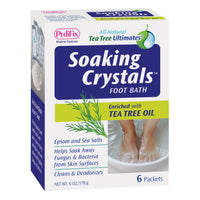Trench Foot
- Summary
- Symptoms
- Read More
Summary
Trench foot is the term used to describe injuries of the foot due to water and cold exposure at sustained temperatures ranging from 32-65 degrees Fahrenheit. Trench foot differs from frostbite in that frostbite is the actual freezing of cells at or below 32 degrees Fahrenheit.
- Macerated skin of the plantar foot and between the toes
- Burning, tingling, and achy pain. Loss of sensation common.
- Pain relieved by rest, drying the foot and avoiding wet conditions
- Pain with re-warming of the foot
Description
 Exposure to damp, cold conditions can result in tissue damage of the foot. (1) This condition is called trench foot, immersion foot, chilblains, or pernio. The mechanism of soft tissue damage in these conditions is not fully understood. Cellular damage occurs to the skin, subcutaneous tissue, blood vessels, and nerves. The longer the exposure to cold, the greater the chance of injury. Injury may be temporary or may result in permanent damage, particularly to the nerves of the feet. "Chilblains" is the term used to describe permanent symptoms following one or more incidents of trench foot. The term "immersion foot" is used to describe both cold and warm weather injuries, while the term "trench foot" is reserved for cold weather injuries.
Exposure to damp, cold conditions can result in tissue damage of the foot. (1) This condition is called trench foot, immersion foot, chilblains, or pernio. The mechanism of soft tissue damage in these conditions is not fully understood. Cellular damage occurs to the skin, subcutaneous tissue, blood vessels, and nerves. The longer the exposure to cold, the greater the chance of injury. Injury may be temporary or may result in permanent damage, particularly to the nerves of the feet. "Chilblains" is the term used to describe permanent symptoms following one or more incidents of trench foot. The term "immersion foot" is used to describe both cold and warm weather injuries, while the term "trench foot" is reserved for cold weather injuries.
Quite often we'll see that a person's occupation contributes to warm water immersion foot. Workers who wear boots, particularly rubber boots and insulated boots, are most susceptible to trench foot and warm water immersion foot.
Causes and contributing factors
Contributing factors to trench foot include repetitive use of rubber boots, insulated boots, or shoes made with synthetic materials. Synthetic materials do not allow normal perspiration to exit the shoe.
Differential diagnosis
The differential diagnosis for trench foot includes:
Athlete's foot
Dermatitis
Hyperhydrosis
Immersion foot
Psoriasis
Toe box dermatitis
Treatment
Prevention becomes the key in treating trench foot. Limiting exposure to cold is essential in preventing and treating trench foot. Maintaining a dry environment within the shoe is a must. Controlling hyperhydrosis (excessive perspiration) can help. Hyperhydrosis cannot be cured, but rather needs to be managed over a patient's lifetime. Some of the methods used to treat hyperhydrosis are really quite simple. Create an environment in the shoe that is cool, dry, and accessible to UV light. Try these four simple tricks:
1. Rotate your shoes every day to allow them to dry thoroughly for at least 24 hours.
2. Avoid synthetic materials like rubber or vinyl. Wear leather or cloth that can absorb moisture.
3. Frequent changes of socks to wick away moisture.
4. Use talc or baby powder daily to wick away moisture.
Drying agents are useful to help control perspiration. Aluminum chloride is the most commonly used topical drying agent. Formalin is used in other prescription strength medications. Antihistamine and anticholinergic medications are used in severe cases. These medications include Benadryl, Banthine or Pro-Banthine. Long term management of hyperhydrosis can be accomplished with Onox Drying Solution.
Severe cases of hyperhydrosis can also be treated with injections or surgery. Injections of Botox, or attenuated botulism, has been used very successfully by podiatrists and dermatologists. Botox is used to paralyze the smooth muscle that regulates the sweat glands of the bottom of the foot. Endoscopic excision of the dorsal root ganglion is a method used by neurosurgeons to create surgical anhydrosis (absence of perspiration) by surgically removing that component of the nervous system responsible for autonomic functions such as perspiration.
When to contact your doctor
Trench foot that does not respond to conservative care should be evaluated by your podiatrist.
ICDM-10 Codes - Trench foot
T69.029A Trench foot/immersion foot, initial encounterT69.022A Trench foot of lt foot, initial encounter
T69.021A Trench foot of rt foot, initial encounter
T69.029D Trench foot, subsequent encounter
T69.022D Trench foot of lt foot, subsequent encounter
T69.021D Trench foot of right foot, subsequent encounter
T69.029S Trench foot, sequela
T69.022S Trench foot of left foot, sequela
T69.021S Trench foot of right foot, sequela
T69.1XXA Chilblains, initial encounter
T69.1XXD Chilblains, subsequent encounter
T69.1XXS Chilblains, sequela
CPT codes - Trench foot
No CPT codes associated with this condition.
Current Procedural Terminology (CPT®) is a product of the American Medical Association (AMA).
References
1. https://www.cdc.gov/disasters/trenchfoot.html
Author(s) and date
![]() This article was written by Myfootshop.com medical advisor Jeffrey A. Oster, DPM.
This article was written by Myfootshop.com medical advisor Jeffrey A. Oster, DPM.
Cite this article as: Oster, Jeffrey. Trench Foot. /blogs/articles/trench-foot
Most recent article update: January 15, 2021.
 Trench Foot by Myfootshop.com is licensed under a Creative Commons Attribution-NonCommercial 3.0 Unported License.
Trench Foot by Myfootshop.com is licensed under a Creative Commons Attribution-NonCommercial 3.0 Unported License.


